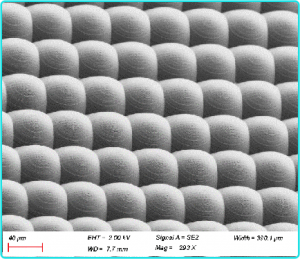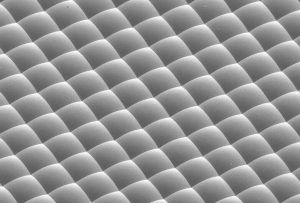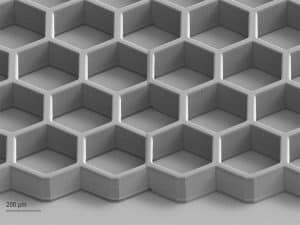
Micro and Nano Processing | Etching
OneOnce the resist film is patterned by photolithography, it makesUseChemicalWorkThe art of transferring this pattern to the nextFacein the substrate or membrane. This is the mode transfer process. There are exceptions, such asFIB lithography, in which the pattern is etched directlyAndDo not makeUseresist, and strippingWorkArt, which makesUsePatterned resist only by dissolving the resistAndNot etched film to enhance overlay film. EtchingWorkartOneGenerally divided into wet chemical etching and isochronous etchingsubEtching.
Wet chemical etching
This process requires only liquid chemicals; therefore, it is very simple and inexpensive to implement. For example, to etch a copper film, as is routine in printed circuit board manufacturing, a resist is applied and patterned on the copper film, and then chemicals such as ammonium persulfate or ferric chloride are used to selectively etch the copper, leaving only the copper area under the protective film. The resist is then stripped with a solvent.
Plasma Etching
Plasma etching is also known as dry etching because it is performed in the gas phase without the use of a liquid. It is sometimes referred to as reactive ion etching (RIE), although the correct term should be ion-assisted chemical vapor phase etching. In a plasma etching system, the substrate is placed in a vacuum chamber on the cathode of a plasma generator and a gas is introduced to produce the reaction. An advantage of this system is that a fairly safe gas can be fed into the chamber that will break down into highly reactive substances in the plasma state. An example of this is CF4. this gas is quite inert under normal conditions, but in the plasma it can produce many F atoms (free radicals) that are highly reactive and spontaneously attack silicon to produce SiF4. since SiF4 is a gas, silicon can easily become a gas in this plasma reaction. In addition, the ions in the plasma bombard the cathode as if they were sputtering. This action creates an additional source of energy that can accelerate the etch rate parallel to the ion trajectory. Because the ions are incident perpendicular to the cathode, this has the effect of accelerating the etch rate perpendicular to the substrate. This produces an etch profile with minimal undercut and strong anisotropy.
We offer fastMEMS device / micro and nanostructure processing design services, Feel free to leave a message to inquire.
Related Products
Related Reading
Introduction to super-surface lenses (metalenses) 丨Design principles, applications and processing methods
Introduction to super-surface lenses (metalenses) 丨Design principles, design principles
Micro and Nano Processing | Common Materials for Optical Devices
Micro and Nano Processing | Substrates/Substrates Commonly Used in Optoelectronics Silicon in Integrated Electronics
Introduction to microfluidic chips丨Common materials and preparation and processing methods
Introduction to microfluidic chips丨Common materials and preparation and processing methods Contents What


